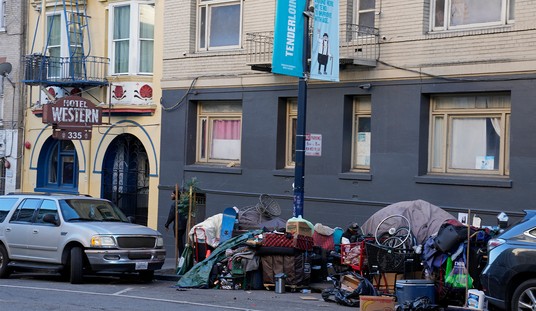The Trump White House hasn’t exactly gotten off to the best start, but it is important to remember how unlikely it was that Trump was even going to win the presidency in 2016.
Trump went from having almost a zero percent chance of winning the White House to ordering missile strikes against the Assad regime in Syria after a chemical weapons attack.
Almost everyone got it incredibly wrong this past election cycle, so the most important question going forward is: which party is in better shape going forward?
Ryne Rohla at Decision Desk HQ decided to research voting patterns and models from a much different perspective to answer that question.
Instead of studying patterns from the national and state level, Rohla decided to dig much deeper and analyze voting patterns from local precincts.
Rohla explains the reasoning behind the study and the importance of it in his piece, “Creating a National Precinct Map“:
Election results show so much more than simply who won and lost a constitutionally-legitimized popularity contest. Election results lay bare the souls of its voters, translating millions of individual hopes, dreams, fears, aspirations, and biases into tangible, observable quantities. No census or survey can truly capture that singular moment of personal truth which occurs in the ballot box.
We can identify your race, your income, a list of a thousand other measurable values which statistically imply the outcome of this moment, but as deterministic as we might try to make it seem, it always comes down to a final act of free will. These individual acts sum to make manifest the inner milieu of a people at a particular moment in time, a secular sacrament ordaining to our political priesthood.
Succinctly, Rohla explains that in order to better understand “middle America” and what issues may be driving voting trends and patterns, there is a need to study data much more closely.
This would be very difficult, but necessary.
Precinct data, despite providing the clearest available picture of how areas vote, can be quite difficult to both come by and to visualize. There isn’t a singular, unified source of precinct-level data nationally nor even at the statewide level in many cases. Precinct boundaries frequently shift over time, especially during the decennial redistricting process following each Census.
After spending most of my spare time in 2015 working on a global religion map, the 2016 Presidential Primaries rolled around, and I decided to go for it: I would do everything in my power to create a national precinct map. I didn’t have a team of researchers. I didn’t have aides. I didn’t have much extra money. I didn’t have connections. But for some reason, I thought I could do it anyway.
Hundreds of emails and phone calls and months of work later, here’s what I came up with:

Rohla also mapped out how precincts voted in 2012 when Barack Obama beat Mitt Romney:
Here’s 2008 when Barack Obama beat John McCain:

The most important changes from 2008 to 2016 are apparent in Michigan, Ohio, Wisconsin, and Pennsylvania — all four states that were won by Donald Trump.
Here’s 2008:

Here’s 2016:

What reasoning could explain this dramatic shift from many of these precincts going from blue to red?
Economics played a major role in the dramatic shift, but so did the Democratic party as a whole.
As reported by the Independent Journal Review:
According to economic expert Stephen Moore, writing in the Washington Times, the reasons Americans are fleeing these states are all driven by economics — namely, that they share the progressive values of “high taxes rates; high welfare benefits; heavy regulation; environmental extremism; high minimum wages.”
Here is an amazing statistic. Of the 10 blue states that Hillary Clinton won by the largest percentage margins — California, Massachusetts, Vermont, Hawaii, Maryland, New York, Illinois, Rhode Island, New Jersey, and Connecticut — every single one of them lost domestic migration (excluding immigration) over the last 10 years (2004-14). Nearly 2.75 million more Americans left California and New York than entered these states.
This delivers a bruising blow to the outlook of the Democratic party, but it gets worse.
Over the last eight years under Obama, the Democratic party lost 1,042 state and federal Democratic posts, congressional and state legislative seats, governorships and the presidency, according to Fox News.
If the latest trends continue, and the president is successful in his promises surrounding the improvement of America, it will be tough for the Democratic party to regain power again.














Join the conversation as a VIP Member